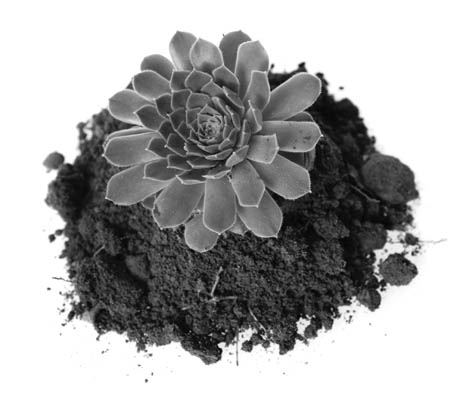Succulent Crossbreeds
Striking Hybrids That Are Drought Tolerant

Plants, more than any other denizens of nature, are often quite promiscuous. Cross-pollination between species among many plants is common and crosses between different, closely related genera are found in nature, as well. Humans also bring them home, creating even more hanky panky. Among the crossbreeds are some striking and useful succulent hybrids to include in the drought-tolerant landscape.
Originally called Manfreda variegata ‘Macho,’ it now appears that this may be a naturally occurring hybrid between M. variegata and Agave celsii. Both grow near each other in Mexico. Seeds were collected from a Manfreda plant, but the resulting seedlings began to look like anything but chips off the old block. Now listed by most suppliers as X Mangave ‘Macho Mocha,’ the handsome plants have wider leaves than their mother, but more of her characteristic maroon speckles. Whatever its name, it is a sturdy plant that forms rosettes of leaves up to six feet across.
Graptopetalum, Echeveria, and Sedumare all well-known genera in the stonecrop family (Crassulaceae). In cultivation, they readily cross to provide some interesting hybrids. Like the X Mangave described above, their names are derived by combining parts of the parent’s names and prefacing it with an “X” to signify that they are hybrids. X Graptosedum crosses usually combine the more compact growth habit of their Sedum parent with the larger leaves and interesting colors of their Graptopetalum parent. One of my favorites has been given the cultivar name ‘Vera Higgins’ (although some growers may simply call it ‘Bronze’). These plants branch freely, creating a great groundcover or edge plant with bronzy-orange foliage.
Graptopetalum also crosses with Echeveria. These crosses are often shaped more like their rosette-forming Echeveria parent (the most familiar one is E. elegans, also called hen and chicks). There are several popular hybrids that combine the very white, waxy look of Echeveria with the branching habit and rounded leaves of Graptopetalum. One good one is X Graptoveria ‘Opalina.’
Another popular group of succulents belong to the family of aloes. There are several genera of these African succulents, but two well-known ones are Gasteria and Aloe. A. variegata has been used to create some especially handsome hybrids. One that forms freely blooming, compact plants goes by the name Gasteraloe ‘Goliath,’ so-called because it looks so muscular. And that’s reason enough to include it in your garden.
August Tips
• Harvest potatoes, onions, and garlic only after their foliage has fallen over and dried out. “Cure” the tubers and corms by laying them out in the shade with good air circulation before storing.
• Because everything is growing so rapidly, there is plenty of material to add to the compost heap. You may have to start another one and turn your earlier pile once more and let it finish off.
• We didn’t have enough rain this past season, so deep water trees and shrubs. Professional arborists can help with soil probes designed to deliver water deeply.
• Keep removing all dry brush, old weeds, piles of clippings, or prunings that could fuel wildfire.



